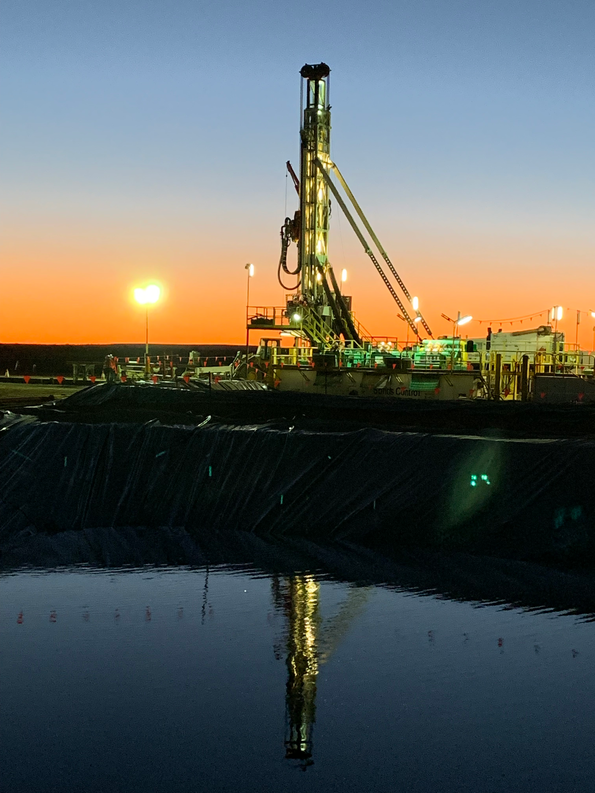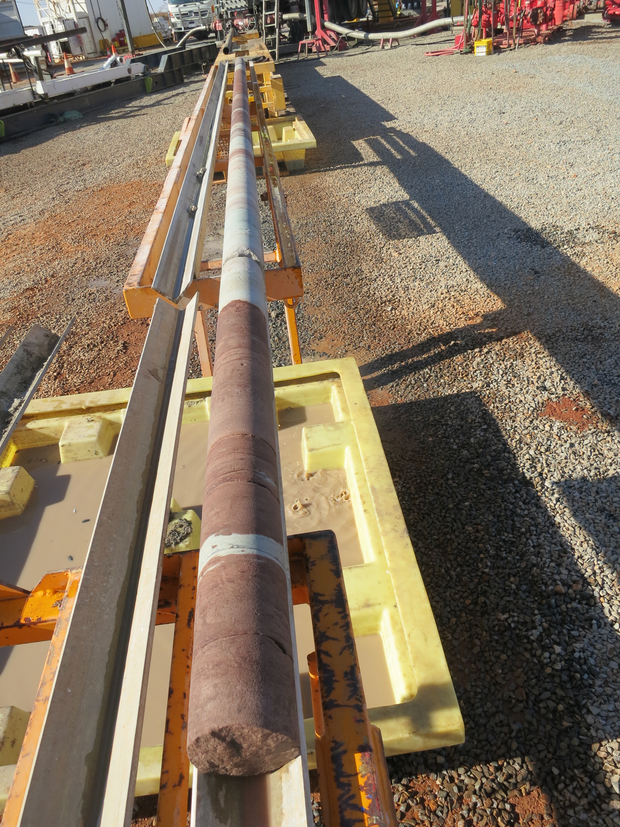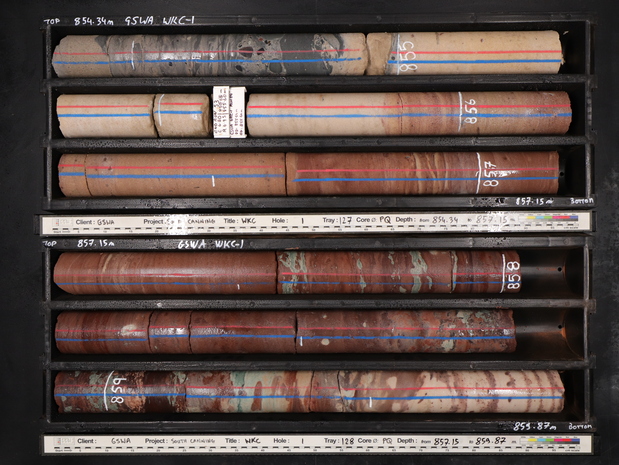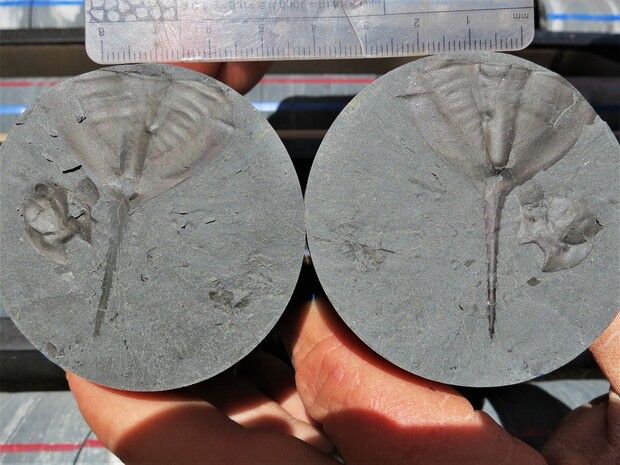Barnicarndy 1 is the only deep stratigraphic well in the Canning Basin. It was drilled as a collaborative project between the Geological Survey of Western Australia (GSWA) and Geoscience Australia (GA). This well was drilled in 2019. GSWA collaborated in several shallow stratigraphic boreholes in the northern Canning Basin, all of which were less than 50 m deep. The core from these shallow holes is stored at the Perth Core Library.
Barnicarndy 1
GA’s Exploring for the Future Initiative is a four-year program (2016–2020) focused on gathering new data and information about the potential mineral, energy and groundwater resources concealed beneath the surface of Northern Australia. As part of this initiative, two major projects have investigated the southern Canning Basin in northern Western Australia.
The initial phase, co-funded by the State Government’s Exploration Incentive Scheme (EIS), was the acquisition of a deep crustal seismic survey (Kidson Sub-basin Seismic Survey) across the southern Canning Basin and surrounding terrains. This survey, aimed at an improved understanding of the subsurface geology of this underexplored region, was undertaken between mid-June and late August 2018.
The second phase of this program, funded by GA, was the deep stratigraphic drillhole, Barnicarndy 1, at a site selected along the Kidson Sub-basin seismic line within the Barnicarndy Graben of the southwest Canning Basin. GSWA served as operator of the drilling project. Drilling commenced on 1 September 2019 and reached a total depth of 2680.53 m on 30 November 2019. The rig was released on 11 December 2019.



The main objectives of the stratigraphic drilling include:
- Correlation of seismic reflectors and their corresponding stratigraphic horizons across the southern Canning Basin
- Obtaining continuous core through the entire pre-Permian Canning Basin stratigraphy
- Obtaining continuous core up to 100 m of underlying pre-Canning Basin basement
- Acquisition of downhole geophysical surveys, including a standard suite of wireline logs and a Vertical Seismic Profile
The Barnicarndy Graben was selected as the location of the stratigraphic drillhole primarily due to the complete lack of pre-Permian subsurface geological knowledge in this area. A number of additional factors helped define the exact location of the drill site, including an existing laydown area, available water bores, ongoing stakeholder engagement in the area and budgetary limitations on final total depth. Site selection was also chosen away from any potential structural hydrocarbon traps as interpreted from the Kidson Sub-basin seismic survey.
The final well design consisted of a top hole section which was rotary drilled to 580 m, followed by a continuous coring section to the total depth of 2680.53 m. The top rotary section was broken into three stages, starting with 311 mm (12¼”) diameter hole down to 23.63 m, followed by a 216 mm (8½”) diameter hole to 218.00 m and finally a 156 mm (61/8”) diameter hole to 580 m. A Blow Out Preventer (BOP) was installed after the 216 mm hole section for well control. Cuttings were collected at 3-meter intervals for the top 580 m of the rotary drilled section.

There were three stages of continuous coring to Total Depth (Table 1); SQ core from 580 to 727.10 m (147.10 m), PQ core from 727.10 to 1602.00 m (874.90 m) and HQ core from 1602.00 to 2680.53 m measured depth (1080.53 m).
All the primary objectives of the Barnicarndy 1 stratigraphic drillhole were successfully achieved. Each core tray was photographed dry, wet and under ultraviolet light as soon as possible after core reached the surface within the well-equipped DDH1 GeoShack. The full core and cuttings have been scanned by the HyLogger at the Perth Core Library. A number of post-well analyses have been planned, including organic and inorganic geochemistry, geochronology, routine core analysis, petrography and various paleontological studies prior to the release of the Well Completion Report and a Digital Core Atlas.
Contact
For further information contact: basinenergy.geoscience@dmirs.wa.gov.au
